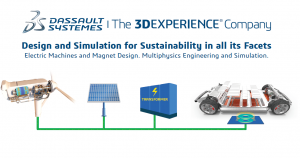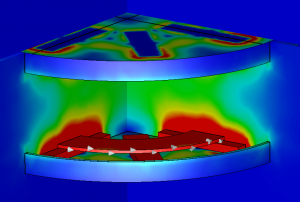Coming Down the Road with Wind and Solar Energy
When talking about electric cars, most of us think of emission-free propulsion with electromotive force and the resulting benefits to humans and the environment. And even better and more exciting if the energy required for this is achieved from wind and solar plants. But really how efficient and clean (CO2-free) is this energy?
To answer this question, it is not sufficient to concentrate solely on the electric drive. Instead, energy production, energy transport, energy storage and energy conversion must be considered as a whole. Let’s start with the energy production. One can argue that wind and solar energy are virtually inexhaustible. The sun shines every day, and is only influenced by seasons and cloud formation in their efficiency. Wind generation is also a source of energy that is reliably available, too. However, to make efficient use of these energy sources, we must ensure that the manufacture and maintenance of wind turbines and solar panels does not adversely affect the carbon footprint and incur unnecessary costs. In this respect, it is understandable why engineers are setting new targets to reduce material consumption, conserve resources and increase efficiency.
Let’s start with the energy production. One can argue that wind and solar energy are virtually inexhaustible. The sun shines every day, and is only influenced by seasons and cloud formation in their efficiency. Wind generation is also a source of energy that is reliably available, too. However, to make efficient use of these energy sources, we must ensure that the manufacture and maintenance of wind turbines and solar panels does not adversely affect the carbon footprint and incur unnecessary costs. In this respect, it is understandable why engineers are setting new targets to reduce material consumption, conserve resources and increase efficiency.
Numerical calculations and simulations of multi-physical systems play a central role. With fluid simulation, it is possible to optimize the shape of wind wheels so that the transmission of wind power to the rotor blades is maximum. With multi-body simulation, you can study ball bearings, gears, and drive shafts, and analyze how to extend durability while increasing performance. With electromagnetic simulation, processes in the electric generator can be calculated in detail to understand the influence of material properties and changes in magnet and coil geometry on energy efficiency. Solar panels can also be further optimized with simulation. Here, the focus of research is particularly in the layer structure of the solar cell and the analysis of material properties.
However, before regenerative energies can be used for the electric drive, the generated electricity must be transformed, power must be transformed and electrical energy must be cached. For this purpose, a variety of electromagnetic components is needed that must work with as few losses as possible and therefore be appropriately optimized. Due to the high complexity and variety of parameters, simulation is often the only way to understand correlations and dependencies exactly. An example is the wireless charging of electric vehicles. The primary and secondary coils used here must be arranged as centrically as possible, and above one another in order to transfer the energy via magnetic coupling. However, the electrical adjustment of the coils and the choice of materials plays an equally important role for optimal power transfer as the arrangement of the coils, the geometric dimension, the number of windings, and the position of the permanent magnets. A task that can be easily executed with simulation and optimization routines.

Lastly, the electrical energy must be stored in battery systems. Here, the research and development turns to the construction of the battery cells, the composition of the individual cells to battery systems and the electrochemical properties of the materials used. The goal is also to consider the carbon footprint of battery manufacturing and recycling while ensuring that size, weight and cost can be saved without sacrificing performance.
With the battery as a mobile source of energy, it is finally possible to go on the road electrified. The electric machines used should act simultaneously as a motor as well as a regenerator to recover energy during braking. Again, there are many small details in the engine design to increase the performance. Therefore, not only do the electromechanical properties play an important role, but also the overall physical behavior of the engine, gearbox and running gear in interaction. Small imbalances in the system can build up and cause uncomfortable vibrations, which can even end in a resonance catastrophe and damage to the powertrain. To understand these effects and to be able to take appropriate countermeasures, system simulations can be carried out that take into account the interaction of structural, thermal, electromagnetic and fluidal effects. Learn more about how the software solutions of Dassault Systèmes SIMULIA offer this possibility.
